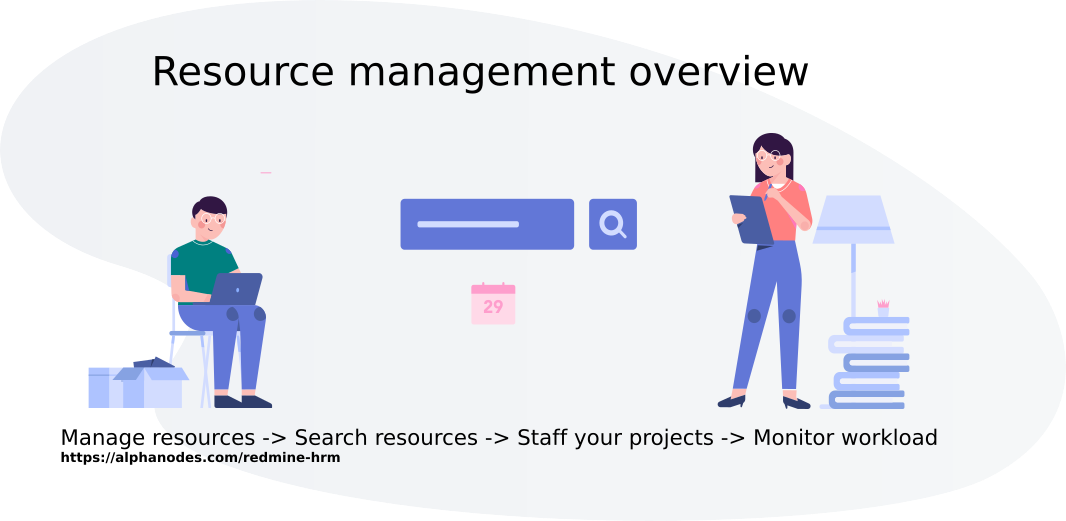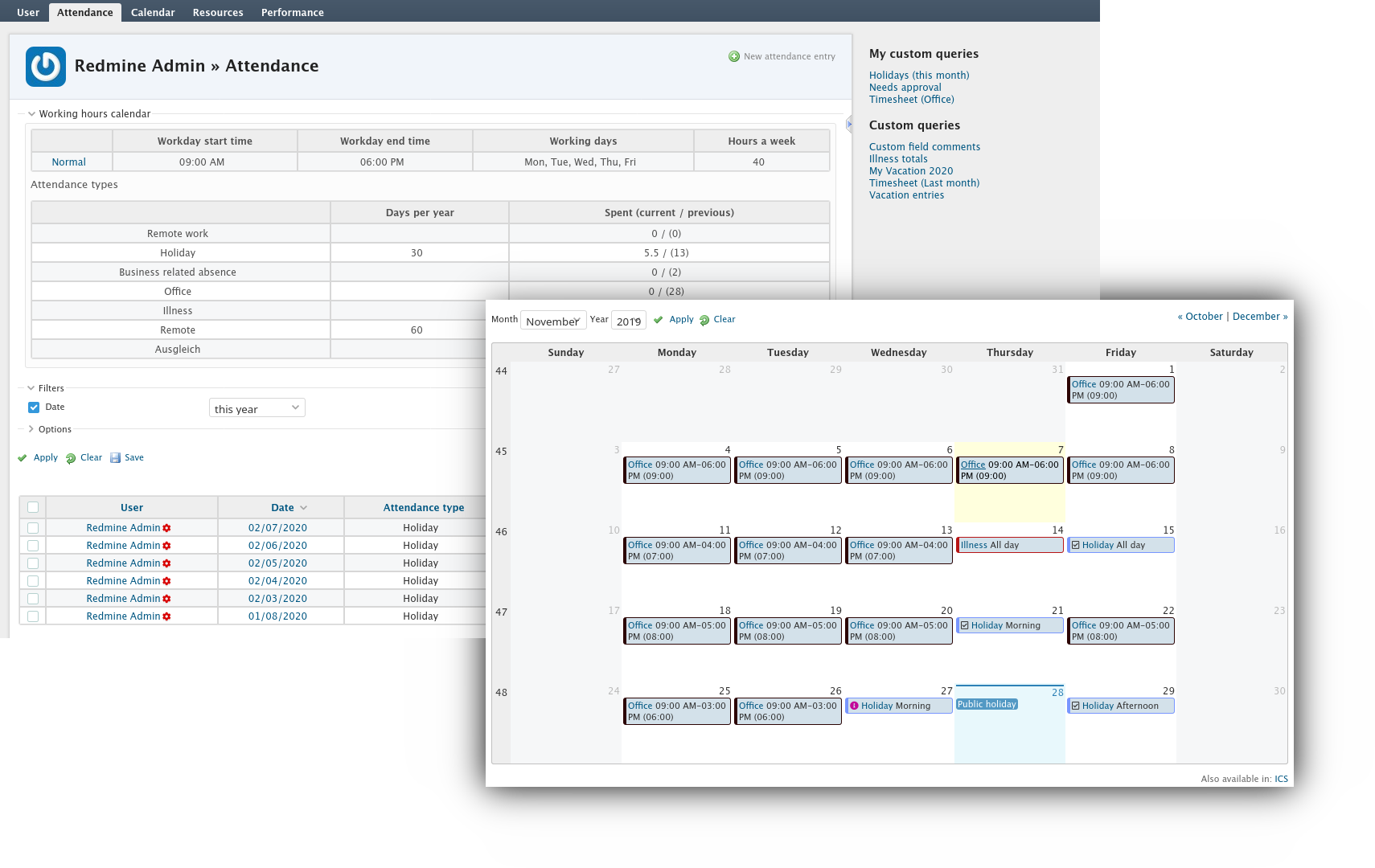Resource management is a part of project management. Because without resources (= employees) there is no team that can implement your projects and ultimately lead your company to success.
In smaller companies the task is carried out by the project manager. In larger companies there are special resource managers.
Goal: controlling and optimization
The goal of sophisticated resource planning is to control the workload of its employees and, in advanced cases, even optimize it.
Every employee in your company not only has different tasks, but often also different working hours, holidays or sick leave and other absences. All this must be taken into account when planning for current and future projects. Especially if you want to complete them within a realistic time frame.
What you need resource planning for
Those who plan their employee resources sensibly will receive answers to the essential question: Who is assigned to which project, when and with what availability?
Many project managers initially shy away from the introduction of resource planning. Often out of fear of the additional time required for the necessary planning.
In addition, resource planning must offer every participant the necessary transparency to depict the resource utilization as realistically as possible. This is usually only possible if everyone in the team has access to or at least insight into the planning.

Advantages of integrated resource management
This problem can actually be easily avoided. Namely by choosing a resource planning that is directly integrated into the project planning. If a company already uses a ticket system, such as Redmine, it makes sense to use a resource extension integrated in Redmine.
This way, you save yourself the effort of working out the requirements, if they already exist as tickets in Redmine. Since the project manager is usually responsible for the creation and assignment of tasks to his team members, he can avoid this additional effort.
And if you educate your employees to always estimate their tasks accordingly and enter planned absences early, then you have a relatively realistic resource planning without much effort.
Advantages of resource management
In many companies, employees are literally slain by the daily work and the chaos that often prevails. By introducing resource management, chaos can be overcome by improving the organization of tasks. And in the long run even the efficiency of the employees is optimized.
The most important advantages of resource planning are as follows:
- Unpredictable disturbances are detected in time and ideally even avoided.
- Employees are only confronted with as much work loaded as they can cope with. Overloads become visible and one can counteract in time.
- Work becomes more transparent. Everyone in the team with access to the resource view sees what the others are working on. By providing this information, you create the necessary trust among each other and at the same time increase the motivation to work in the team. According to the motto We are all in the same boat. This also avoids that people who have only worked silently before can be even better involved in the group. Be it to improve agreements or to share their knowledge with others.
- The work becomes verifiable. The planning of tasks via resource management also provides the necessary evidence to the customer or stakeholder as well as to the management. The client sees what is being worked on and what has already been achieved. How realistic the planned implementation is and how efficiently the team works.
- The resource capacity planning is improved. Capacity is the resources available to get the work done or complete a project on time and within budget. With resource planning, you can see for the first time whether the available employee capacities are even capable of completing the work to be delivered to a customer or stakeholder in the planned time. Or whether additional employees must be brought on board for the period.
- Resource utilization is better documented. Many companies plan their resources in long Excel spreadsheets. Such manual processes often lead to planning errors that are not immediately apparent. For better use and allocation but also to reduce errors, it is recommended to switch to a special resource planning software at an early stage.
Planning ahead cleanly
To learn more about resource planning and attendance management in Redmine, visit our Redmine HRM information page.
Which errors in resource management are to be prevented?
The early decision to use resource planning is in any case a big step towards project success. Because resource planning makes progress plannable and above all measurable. However, it alone is no guarantee for a smooth process.
There are a few stumbling blocks that project managers must learn to overcome, especially at the beginning.
Expect 100% job performance. An employee with an 8-hour workday will never be able to invest the full time in completing project tasks. Besides the work to be done on the project, there are many other activities that reduce productivity. Therefore, resource planning should be realistic. For example with a workload of 60 to 80 percent (depending on the individual employee). The rest is usually spent on telephone calls, meetings, e-mails, short breaks or corridor radio communication.
Assign employees incorrectly. A look at the resource planning shows that there are one or two employees who still have the next week’s available time. Assigning them any task just to keep them busy is not always the best choice. Depending on their competence, employees should also complete their tasks accordingly. Otherwise they will only become demotivated by being over- or underchallenged.
Too much micromanagement. Many project managers love to plan and, in the course of this, perfect the tasks down to the smallest detail. Often this working method is preceded by numerous meetings with the employees to discuss everything down to the smallest detail. In the long run, this micromanagement is counterproductive. Because in addition to the increased planning effort, the employees also have a high level of control over their activities. Nobody wants to be constantly consulted when they are on the job. Employees can only develop their potential if they are trusted to make decisions based on their competence and knowledge in order to achieve the desired result. This promotes not only motivation but also personal responsibility.
Accelerate tasks through prioritization. A feature in most project management tools is the ability to prioritize tasks. This is used with pleasure and not only by project managers, but also by customers or stakeholders. For example, if they feel that the task is progressing too slowly, or if they need to complete the task before someone else does. In such cases, it is better to work with the project manager to divide the work into time units (e.g. sprints) and to select the tasks that need to be completed first. You should leave the employee a certain amount of leeway as far as processing is concerned. Because not every day is equally productive and not every task is as easy to accomplish as expected. Prioritization should really only be exceptions that can be handled immediately. Because they usually disturb the workflow. Which in turn impairs efficiency and throws the previous planning out of kilter. If too many tasks are regularly prioritized, this is definitely a warning signal for the project manager. This is where it is worth taking a closer look and tracking down the actual reason.
Redmine Plugins for Home-Office use
Use our 10% discount code for the purchase of our plugins to provide your employees with the necessary functions also in their home office: ALPHANODES10-HO (Redeemable in the online shop voucher field. Limited validation) - Details.
- Handle too many unplanned tasks. Actually, in most companies it is unfortunately still common practice to insert activities on call. Thereby the already made planning is partly considerably affected. Here it is important to get the demand better under control and only then to allocate the resources that can be used for it accordingly. In such a case the resource forecast helps to predict future resource requirements before a project starts.


